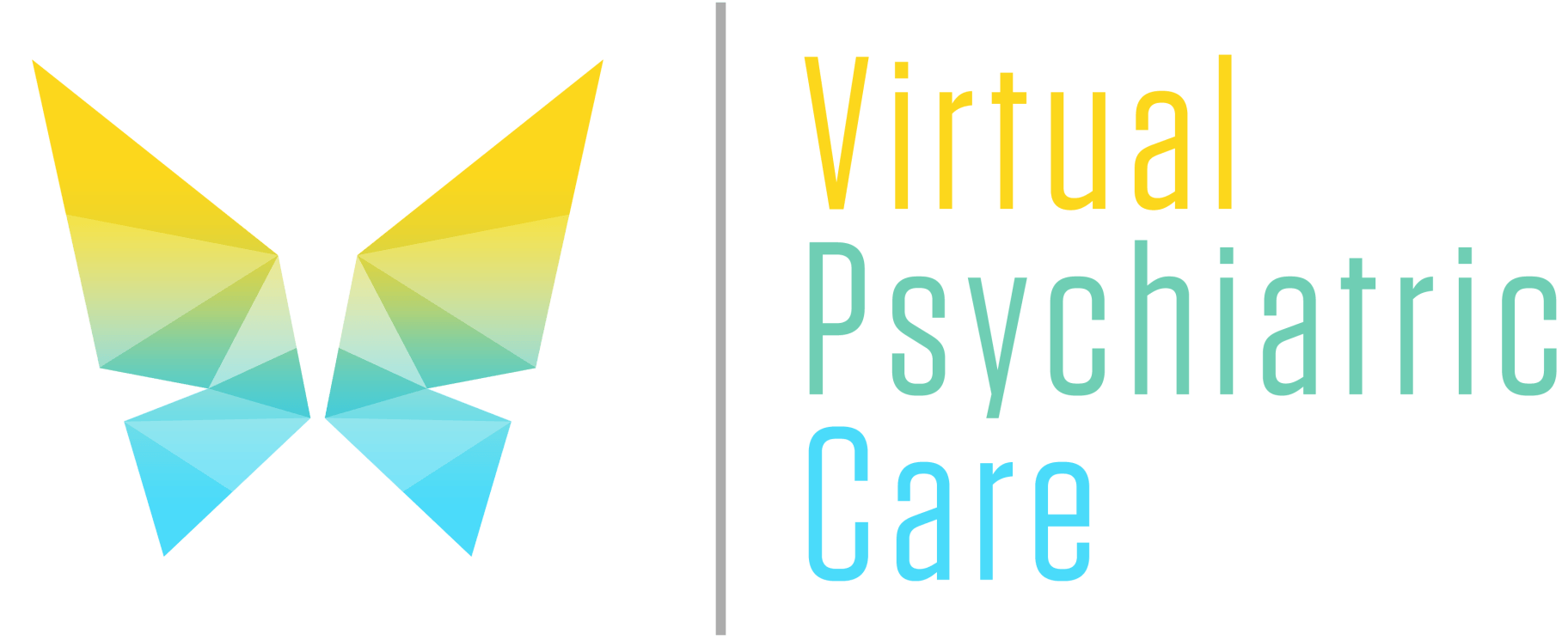ADHD in Women-What it Looks Like

ADHD in Women-What it Looks Like
ADHD in women - an often misunderstood and overlooked topic. We hear so much about ADHD in children, but what about the countless women silently navigating this condition every day? It's time to shed light on this hidden struggle and explore what ADHD looks like specifically in women.
From managing daily tasks to maintaining relationships, work responsibilities, and even keeping up with household chores, ADHD can have a profound impact on a woman's life. But how does it present differently in women compared to men? What are the telltale signs and symptoms that we should be aware of?
In this blog post, we'll dive into the world of ADHD in women - uncovering its unique characteristics, exploring its neurological basis, discussing other mental health conditions that may mimic its presentation, and delving into testing and treatment options. So let's embark on this journey together as we unravel the mysteries surrounding ADHD in women!
ADHD in Women, what it looks like; how it may impact daily functioning; affect relationships, work, management at home
Living with ADHD as a woman can be an intricate dance, where daily functioning becomes a delicate balancing act. The impact of ADHD on everyday life is far-reaching and can manifest in various ways.
In terms of daily functioning, women with ADHD often find themselves struggling to stay organized and focused. Simple tasks like prioritizing responsibilities or keeping track of deadlines can become overwhelming challenges. Time management may feel elusive, leading to a constant sense of being behind schedule.
But it doesn't stop there - relationships bear the weight too. Women with ADHD might struggle to maintain close connections due to forgetfulness or impulsivity that could inadvertently hurt their loved ones' feelings. Destractibility during conversations may make it difficult to fully engage and actively listen, leaving others feeling unheard.
The workplace can also present unique challenges for women with ADHD. Difficulty staying on task or completing assignments within deadlines may lead to decreased productivity and increased stress levels. It's not uncommon for these women to feel overwhelmed by the demands of their job, which can negatively impact career growth and self-confidence.
Managing a household adds yet another layer of complexity for women with ADHD. From juggling multiple responsibilities such as meal planning, cleaning, and organizing appointments, finding effective strategies becomes crucial in maintaining order at home.
ADHD in women is like navigating through a maze - each day presents its own set of obstacles that require patience and resilience. But understanding how this condition impacts daily functioning is the first step towards finding ways to manage its effects effectively
The Way it Presents in Women Compared to Men
ADHD, or Attention Deficit Hyperactivity Disorder, is often associated with children and young boys. However, it is important to recognize that ADHD can affect individuals of all genders and ages. When it comes to women, the way ADHD presents itself may differ from how it appears in men.
In women, ADHD symptoms may not be as overt or easily recognized. Instead of displaying hyperactive behavior and impulsivity commonly seen in men with ADHD, women often exhibit more internalizing behaviors. They may struggle with chronic disorganization, difficulty focusing on tasks or conversations, and a constant feeling of being overwhelmed.
Women with ADHD tend to internalize their struggles more than men do. Rather than acting out or becoming disruptive in social situations like their male counterparts might do when experiencing difficulties due to ADHD symptoms; Women are more likely to withdraw socially or appear quiet and reserved.
Additionally, women with undiagnosed ADHD may develop coping mechanisms that mask their symptoms such as perfectionism- overworking themselves excessively trying to manage everything at once- which only exacerbates the stress they experience daily.
It's crucial for healthcare professionals and society as a whole to understand these gender differences in order to properly identify and support women living with undiagnosed ADHD. By recognizing these unique presentations in females versus males; we can ensure that appropriate interventions are implemented early on so that those affected can thrive both personally and professionally
Signs and Symptoms in Women
Signs and symptoms in women with ADHD can vary widely, making it sometimes difficult to recognize the condition. While some may exhibit hyperactivity and impulsiveness, others may present primarily with inattention. This difference in symptom presentation is one reason why ADHD often goes undiagnosed or misdiagnosed in women.
Women with ADHD may experience difficulties focusing on tasks or completing them efficiently. They might struggle with organization and time management, frequently losing track of important deadlines or appointments. This can lead to feelings of frustration and overwhelm.
In social situations, women with ADHD may have trouble maintaining relationships due to their tendency to be forgetful or easily distracted during conversations. They might also interrupt others frequently without realizing it. These challenges can strain both personal and professional connections.
Emotionally, women with ADHD may experience heightened sensitivity and mood swings that can impact their overall well-being. Additionally, they might have difficulty regulating their emotions effectively, leading to impulsive behaviors or outbursts.
Physically, restlessness is a common symptom seen in women with ADHD. They often struggle to sit still for extended periods of time and constantly feel the need to be on the move.
It's important to remember that everyone's experience of ADHD is unique; not all women will display every symptom listed here. However, if you identify with several of these signs and they significantly impact your daily life functioning, seeking an evaluation from a healthcare professional could provide clarity and help guide appropriate treatment options
Neurological Basis of ADHD
ADHD, or Attention Deficit Hyperactivity Disorder, is a condition that affects millions of people worldwide. While it is often associated with children and boys in particular, ADHD can also affect women in significant ways. Understanding the neurological basis of ADHD can shed light on why it presents differently in women compared to men.
Research suggests that differences in brain structure and function play a role in the development of ADHD. Neurotransmitters like dopamine and norepinephrine are thought to be involved in regulating attention and impulse control, and abnormalities in these neurotransmitter systems have been observed in individuals with ADHD.
Specifically, certain regions of the brain responsible for executive functioning – such as the prefrontal cortex – may be smaller or less active among individuals with ADHD. This can lead to difficulties with organization, planning, time management, and self-regulation.
Additionally, studies have shown that there may be genetic factors at play when it comes to ADHD. Certain genes related to dopamine receptors have been linked to an increased risk of developing the disorder.
It's important to note that everyone's experience with ADHD is unique. Some women may predominantly exhibit symptoms related to hyperactivity and impulsivity, while others may struggle more with attention deficits or a combination of both.
In conclusion: The neurological basis of ADHD involves differences in brain structure and functioning related to neurotransmitters like dopamine. Genetic factors also contribute to its development. Understanding these underlying mechanisms helps us better comprehend how this disorder manifests differently among women compared to men.
Other mental health conditions with similar presentation to ADHD, other conditions that commonly co-exist with ADHD in women including PTSD
Other Mental Health Conditions with Similar Presentation to ADHD
ADHD in women can often be mistaken for or coexist with other mental health conditions. One such condition is post-traumatic stress disorder (PTSD). Both ADHD and PTSD share symptoms like difficulty concentrating, impulsivity, and restlessness. However, it's important to note that while they may have similar presentations, the underlying causes and treatment approaches differ.
Another condition commonly associated with ADHD in women is anxiety disorders. Women with ADHD often experience heightened levels of anxiety due to their struggles with organization, time management, and meeting expectations. This can lead to constant worrying and feeling overwhelmed.
Depression is yet another mental health condition that frequently co-occurs with ADHD in women. Dealing with the daily challenges of managing attention difficulties can easily take a toll on one's emotional well-being. Feelings of sadness, hopelessness, and low energy are common among women living with both depression and ADHD.
Substance abuse is also more prevalent among individuals diagnosed with ADHD compared to the general population. Self-medication through drugs or alcohol use may temporarily alleviate some of the symptoms associated with ADHD but ultimately exacerbate overall functioning over time.
It's essential for healthcare professionals to consider these comorbid conditions when assessing women for possible ADHD diagnosis. Accurate identification of all existing mental health concerns will ensure appropriate treatment plans are put in place holistically addressing all aspects affecting an individual's well-being.
Testing and Treatments
When it comes to ADHD in women, getting an accurate diagnosis is crucial. However, diagnosing ADHD in women can be challenging due to the differences in how it presents compared to men. This highlights the need for specialized testing that takes into account the unique symptoms experienced by women.
There are several assessment tools available that can help evaluate ADHD symptoms in women. These may include self-report questionnaires, interviews with a healthcare professional, and observations from family members or close friends who have witnessed the individual's behavior over time. It's important for healthcare providers to consider not only the classic symptoms of hyperactivity and impulsivity but also the more subtle signs often seen in women.
Once a diagnosis has been made, treatment options for ADHD are available to help manage symptoms effectively. Medication is often prescribed as a first-line treatment, with stimulant medications being commonly used. Non-stimulant medications may also be considered depending on individual circumstances.
In addition to medication, therapy can play a significant role in managing ADHD symptoms in women. Cognitive-behavioral therapy (CBT) has shown promise in helping individuals develop effective coping strategies and improve executive functioning skills.
Lifestyle modifications such as maintaining a structured routine, practicing good sleep hygiene, engaging in regular exercise, and implementing organizational strategies can also make a positive impact on daily functioning for those with ADHD.
It's important to remember that each woman's experience with ADHD is unique, so finding an individualized approach that addresses her specific needs is key. Collaborating closely with healthcare professionals who specialize in adult ADHD is essential for proper management.
In Conclusion
ADHD affects both men and women, but its presentation can vary significantly between genders. For many years, ADHD was predominantly associated with males; however, we now know that countless females struggle silently due to undiagnosed or misdiagnosed cases of this condition.
Women experiencing difficulties related to attention deficit hyperactivity disorder may face various challenges in different aspects of their lives, including relationships, and work.











